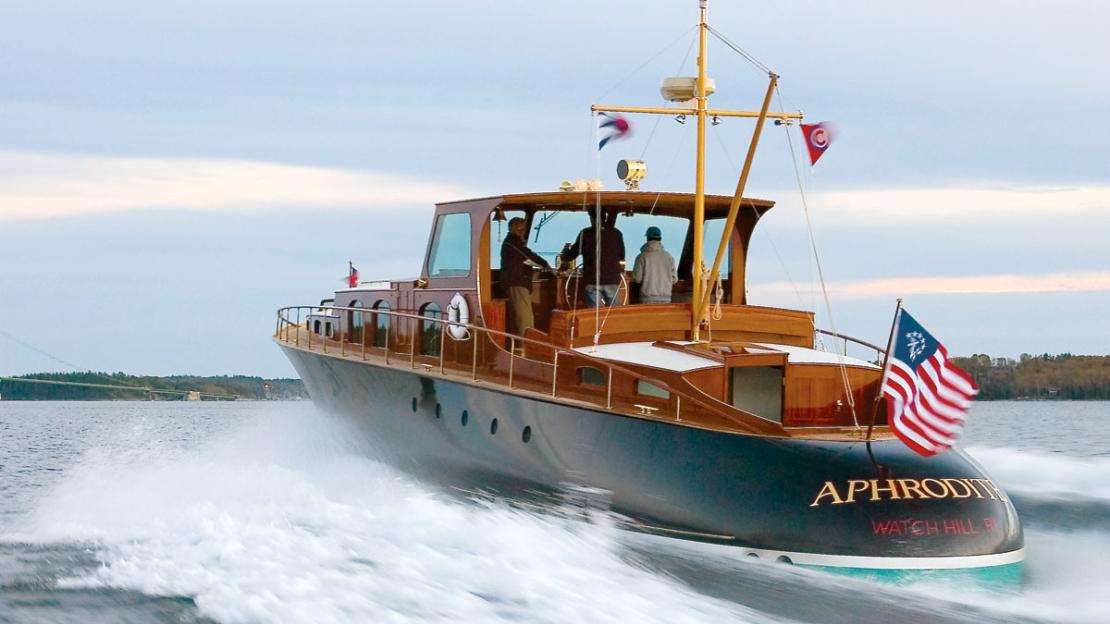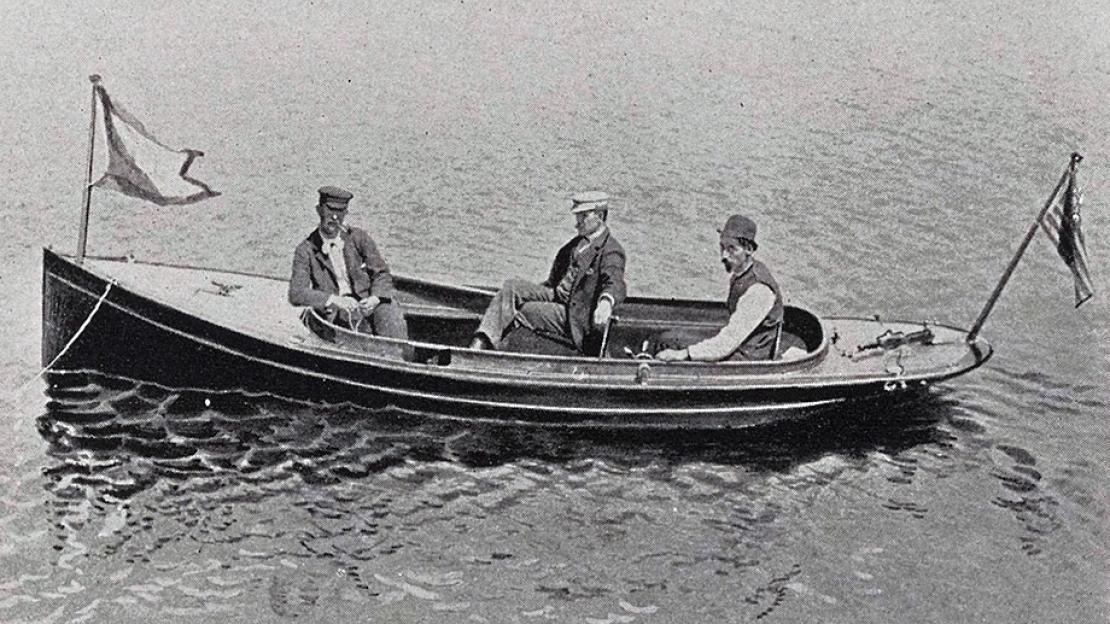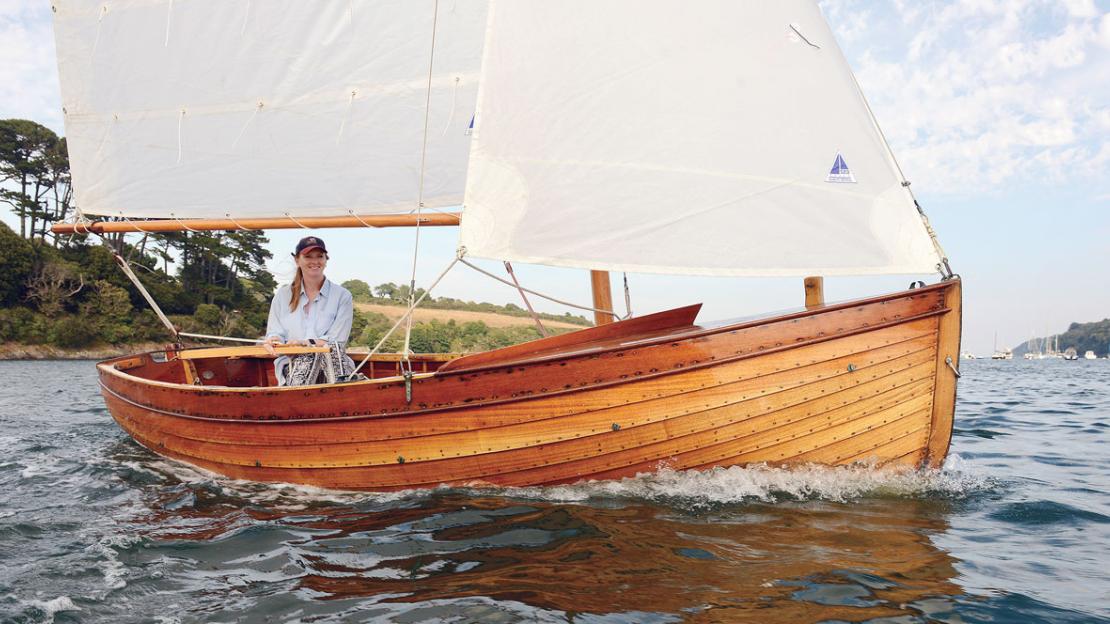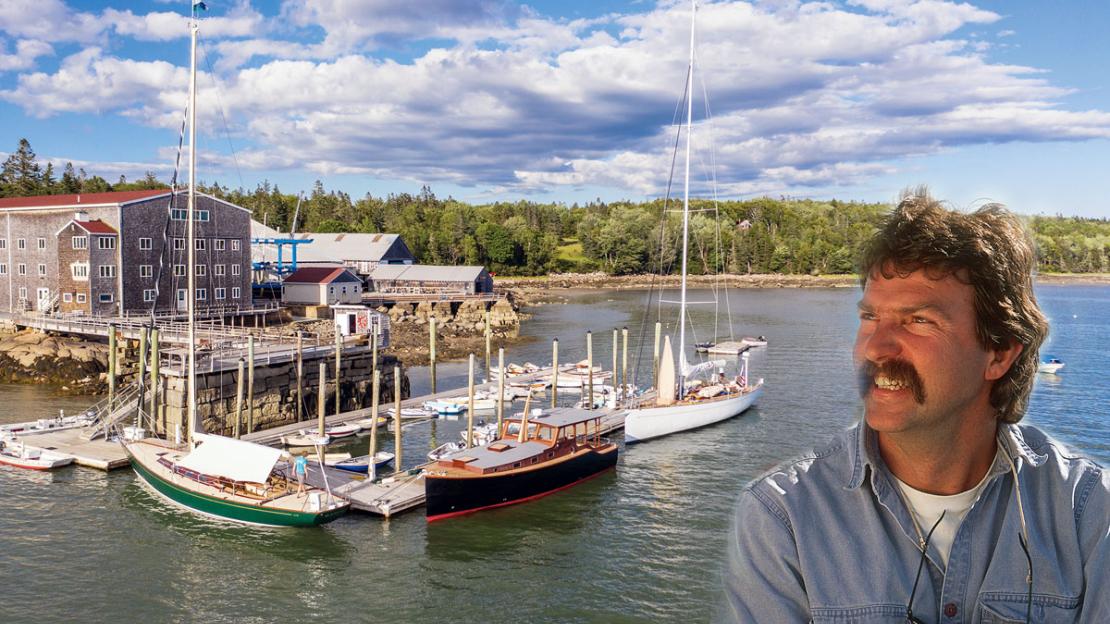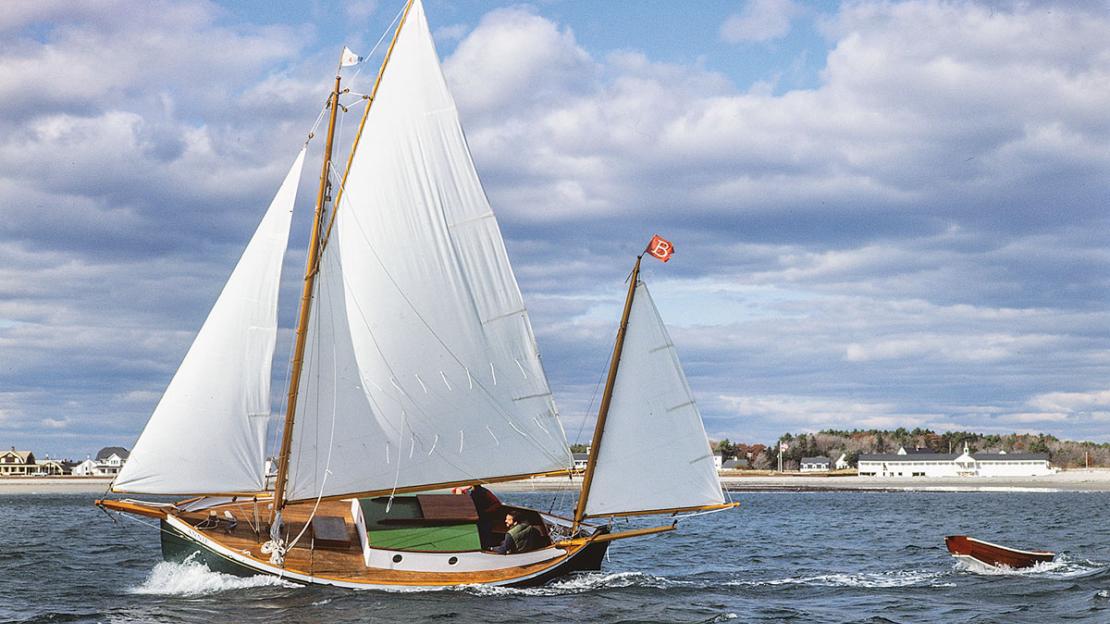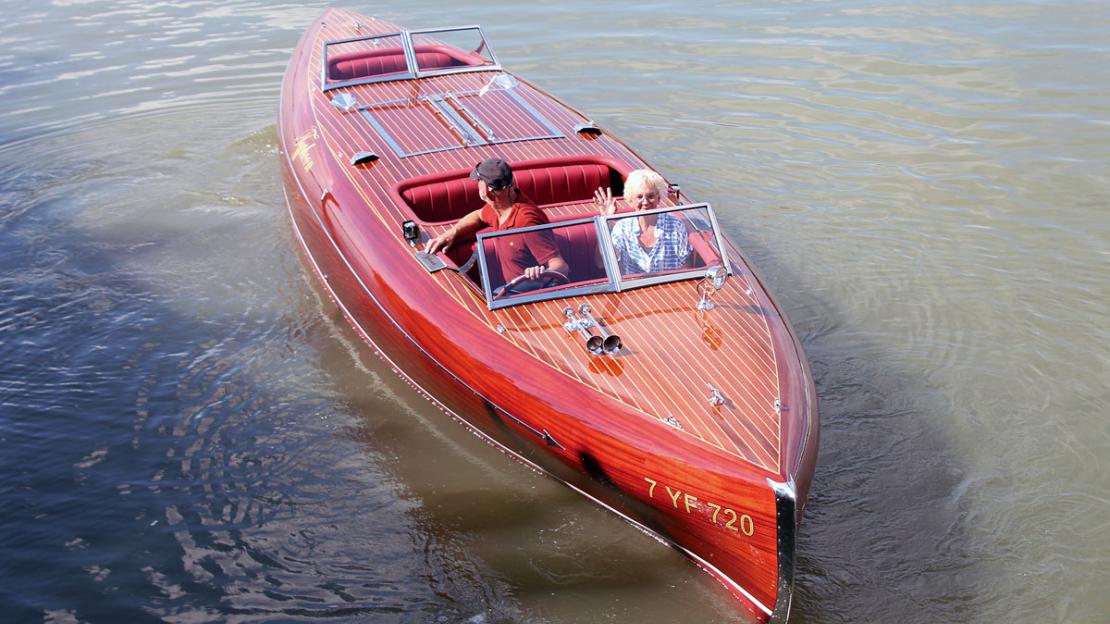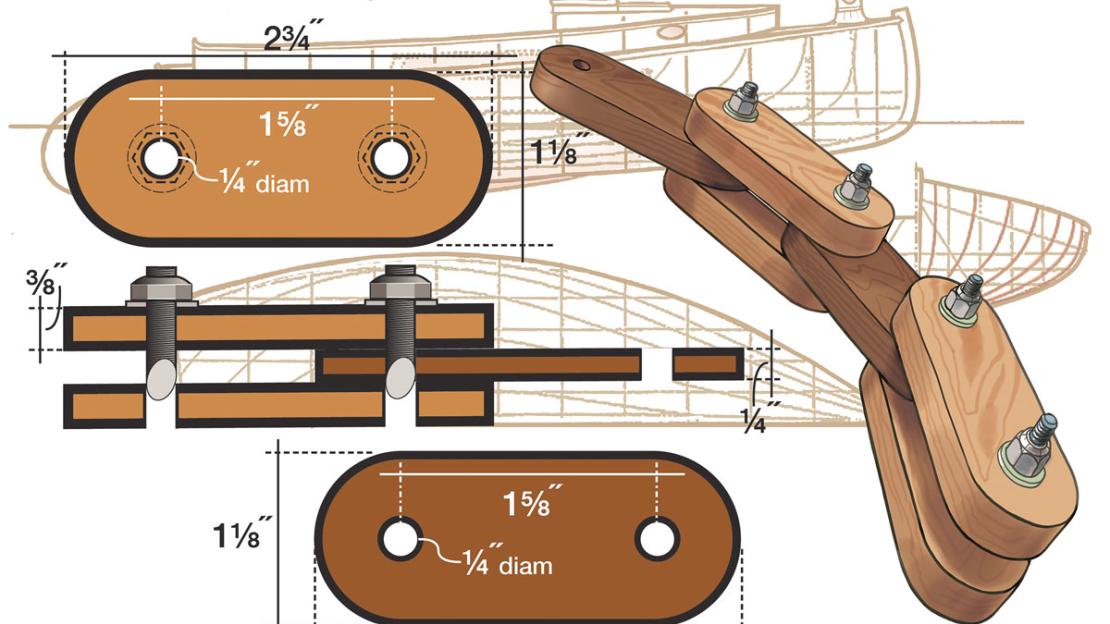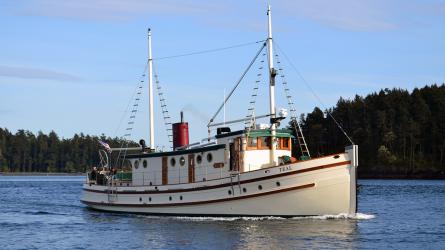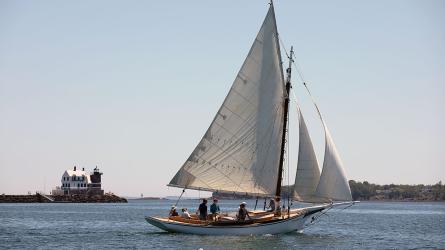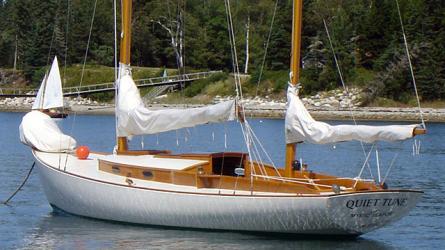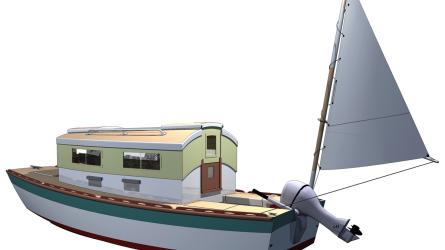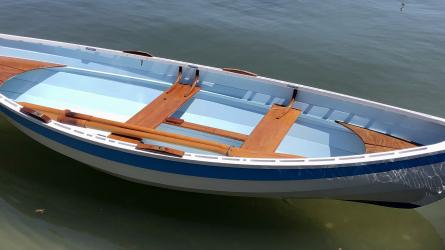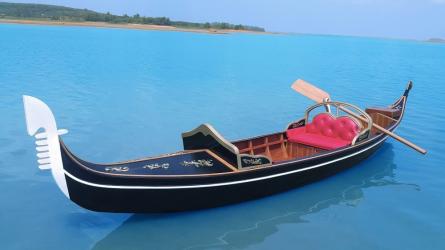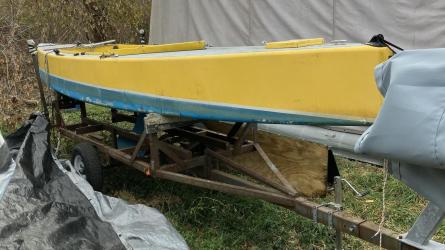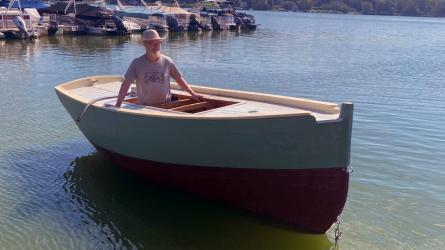ANNIE
In 1981, when I was still in high school, copies of this magazine began circulating around the shores of my home waters north of Boston. My first encounter with WoodenBoat, as I recall it, was issue No. 38 (January/February 1981). I was at the town landing in Marblehead, Massachusetts, and a photographer named Sandy Johnson was showing a copy of her cover image of the Fife yawl COTTON BLOSSOM IV—one of a fleet of wooden classics still hailing from Marblehead. The magazine hooked me, and I subscribed.
One of the first issues I received was No. 41. On its cover was a beautiful hull, framed in oak and partially planked in cedar. The photo was by Benjamin Mendlowitz, and it heralded a six-page photo essay by Art Brendze—co-owner of the yard where the boat was built—with photographs by Ben, showcasing the boat’s construction, launching, and first outings under sail. She was called ANNIE, and was a 24' yawl designed by Fenwick Williams—though she seemed much bigger.
My reaction to that boat was visceral. I didn’t have the vocabulary then to describe what drew me to her, and I’m not sure I do now. But as I’ve watched the boat’s life unfold, and learned more about her creation, I see something transcendent in her, some mystical link to Marblehead and the surrounding region. Fenwick Williams lived in that town, though I never knew him. Art grew up in the adjacent town of Swampscott, and, as he recounts in his article beginning on page 62, as a young man he befriended a group of local legendary naval architects, one of whom was Fenwick. ANNIE’s longtime owners Fred and Jane Bauer were from Marblehead, and they kept her there for about two decades in a portion of the harbor that was then populated by interesting wooden boats.
ANNIE and that cover story, mixed with some luck and good timing, drew me into the career I’ve pursued for more than 30 years. During that time, I’ve encountered several more yawls inspired by ANNIE. One notable one, appearing in an article called “Bluebear’s Boat,” tells a twisted tale of mountain boatbuilding gone off the rails (see WB No. 109). Another, a bright-hulled, jewel-like example called RARUS, made an appearance at The WoodenBoat Show back in 1994. I’ve lost track of her.
But recently, both ANNIE and Art have moved to Brooklin, Maine, home of WoodenBoat. Art had lost track of her, and, as you’ll learn in your reading, was stunned to encounter her one morning when he awakened aboard his lobsteryacht, EASTWARD, to find her moored nearby. It’s a comfort to have her here. While the old wooden-boat ethos, as a cultural mainstay, is now largely gone from Marblehead, ANNIE carries it like a precious cargo.

Editor of WoodenBoat Magazine
